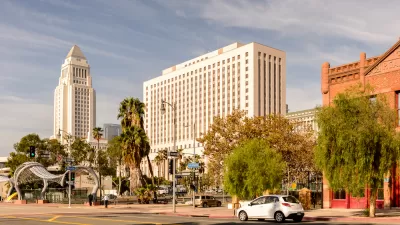In California, agencies are working to redefine enforcement and safety procedures as the number of homeless individuals who seek refuge in vulnerable open or wild landscapes continue to increase.

The total homeless count in Los Angeles County is 52,765 and 75 percent of the homeless population are unsheltered in LA County. Roughly 40 percent of homeless individuals in Los Angeles are sleeping in encampments or tents. Although Southern California has supported funding for supportive housing via voter initiatives, the number of homeless individuals has only just begun to stabilize and tick down.
One of the more unique issues for the Santa Monica Mountains Conservancy, which manages much of the open space and wild landscape of Los Angeles County, is the interaction between public safety, homeless individuals seeking refuge, and ecosystem management.
In an excerpt by The Planning Report, state and local agency representatives discussed how they are working to redefine enforcement and safety procedures. The panel, assembled by Conservancy, featured Armando Hogan of the LA Fire Department, Dominic Choi of the LA Police Department, LA City Park Ranger Albert Torres, and District Superintendent for California State Parks Craig Sap provided insights into how Southern California is tackling the new challenges of increased extreme heat.
FULL STORY: Convergence of Homelessness and Open Space Challenges: Santa Monica Mountains Conservancy Forum

Maui's Vacation Rental Debate Turns Ugly
Verbal attacks, misinformation campaigns and fistfights plague a high-stakes debate to convert thousands of vacation rentals into long-term housing.

Planetizen Federal Action Tracker
A weekly monitor of how Trump’s orders and actions are impacting planners and planning in America.

San Francisco Suspends Traffic Calming Amidst Record Deaths
Citing “a challenging fiscal landscape,” the city will cease the program on the heels of 42 traffic deaths, including 24 pedestrians.

Bend, Oregon Zoning Reforms Prioritize Small-Scale Housing
The city altered its zoning code to allow multi-family housing and eliminated parking mandates citywide.

Amtrak Cutting Jobs, Funding to High-Speed Rail
The agency plans to cut 10 percent of its workforce and has confirmed it will not fund new high-speed rail projects.

LA Denies Basic Services to Unhoused Residents
The city has repeatedly failed to respond to requests for trash pickup at encampment sites, and eliminated a program that provided mobile showers and toilets.
Urban Design for Planners 1: Software Tools
This six-course series explores essential urban design concepts using open source software and equips planners with the tools they need to participate fully in the urban design process.
Planning for Universal Design
Learn the tools for implementing Universal Design in planning regulations.
planning NEXT
Appalachian Highlands Housing Partners
Mpact (founded as Rail~Volution)
City of Camden Redevelopment Agency
City of Astoria
City of Portland
City of Laramie





























